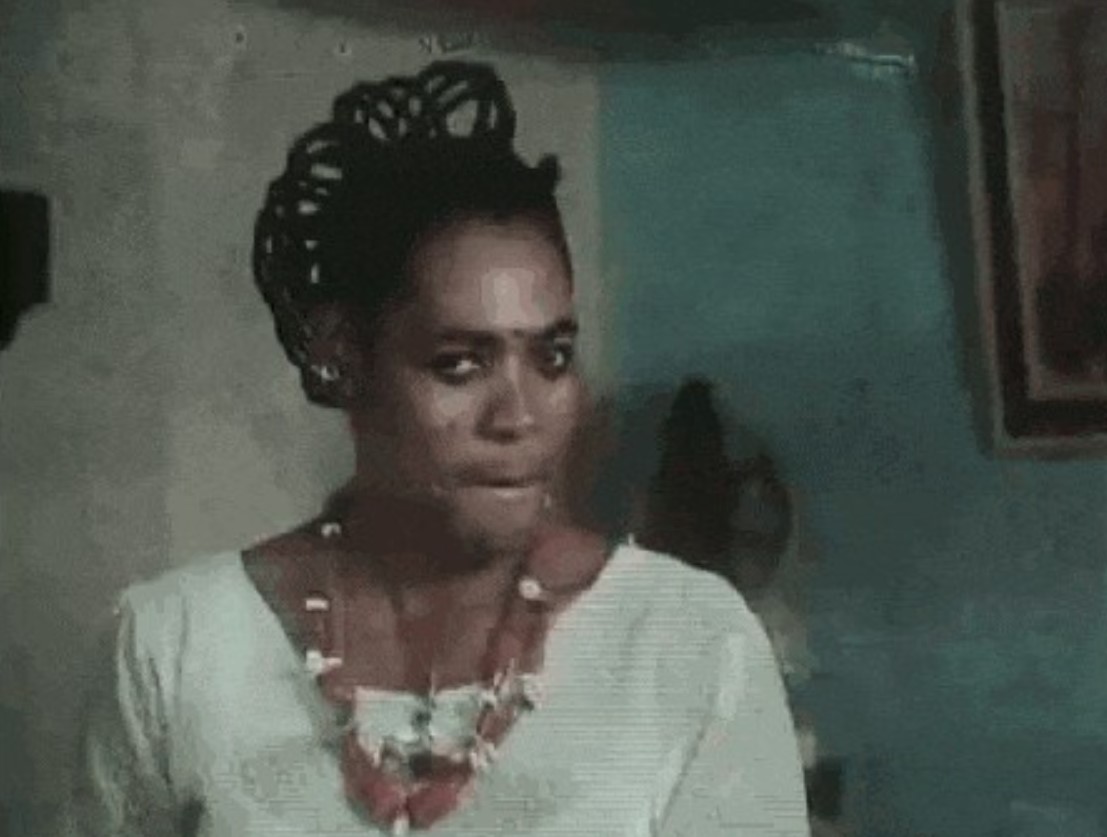Area Scatter’s life is proof that history has been replete with personalities operating on the minority margins of societal conventions about gender and sexuality, no matter how we try to deny their existence.
By Chimezie Chika
Owerri in the postwar years was a melting pot of all kinds of Highlife—the bongo-rhumba blend popularized by the Oriental Brothers’ band. The city’s joints and speakeasies teemed with musicians and aspiring musicians, as distinct in their appearance as they were in their vocals. For if there was one thing especially notable about the eventful ‘70s it was the bold, flamboyant trouser flares and Afros of the fashion zeitgeist.
As far as fashion went—to the extent that anyone can make a judgment on what is visible—one Owerri musician, Uzoma Odimara, took things even further by dressing—not in the flared bongo trousers and wide-collared shirts as all male musicians did at the time—entirely in female attires (wrapper, plaited hair, blouse, heels), complete with coiffed hair and makeup.
For this reason, he was called—or called himself—Area Scatter, for his appearance purportedly drew stares and caused some commotion and confusion. From evidence of the word of mouth, however, Area Scatter’s enigmatic personage was in general accepted and admired.
The only extant documentary video of Area Scatter’s musical performance, a YouTube clip, shows calm enunciation of melody before a peaceful, attentive audience. His voice was masculine, and his song, which has a spiritual lilt, is an eulogy (Ochie Dike nwere ekele, one line went). Their appearance did not seem to be the focus from a musical point of view, yet a figure such as that called attention to themselves by their very unusual appearance.
Thus, much of their contemporary and posthumous reputation is rife with speculations about what Area Scatter really meant or represented by such a bold sally in fashion. Needless to say, Area Scatter’s disruptive fashion choices have caused considerable bewilderment. The general implication in Nigerian media has been that Area Scatter’s female attire was a ploy to draw attention to his music.
They therefore lump them into the collective register of weird fads—essentially and, in the most simplistic manner, pasting the label of ‘cross-dresser’ upon the figure. To wit, a basic Google search today brings up article captions along the lines of “Nigeria’s First Crossdresser”.
A first glance through images of Area Scatter would reveal that this is a far more complex figure than the media was willing to investigate. Area Scatter’s persona was neither simplistic nor categorised as a mere fashion strategy? This enigmatic personality presents many scenarios for simultaneously obvious and unanswered questions.
The cipher that is Area Scatter’s life remains mostly constructed out of speculations. If video evidence had not been in existence, perhaps it would even have been more mythical. Not much is known about his date of birth or the conditions of his upbringing. Nevertheless, limited information available reveals interesting career trajectories, beginning with his male first life (hence he).
His hometown was Akwakuma, one of the communities that make up Owerri, the Imo State capital. Before the civil war, he was said to have been a male civil servant in the Eastern Region government, as the documentary clip on YouTube reveals. During the war, he disappeared into the forest for seven years, emerging after the war as a woman and a musician.

The mythical angle of Area Scatter’s mystery was also greatly enhanced, it seems, by their striking appearance. An imposing height, towering over most people, a talent for music, which seemed to come out of nowhere for a former humble civil servant, distinct female mannerisms—the character of Area Scatter appeared to be a cross between male and female.
The mystery is enhanced by the spiritual dimension of Igbo Odinani, which believes in the kind of spiritual metamorphosis that could cause a total change in a human’s trajectory. Many priests and priestesses in Igboland, according to the dictates of the deities they serves, may have an aspect of non-gendered or even animalistic persona: many priestesses are seen as men, in a spiritual sense, and male priests are seen as transcending human notions of gender binaries, making them closer to gods than men. But the complex world of Igbo cosmology also clearly delineates male and female gods, as well as genderless gods.
Upon Area Scatter’s re-emergence, they assumed the dual role of priestess and musician. They were said to have returned with bones and skulls used in ritualistic practices and divination, and therefore became a dibia as well. Most significantly, the principal item of attraction was the Ụbọ Aka—an instrument some people incorrectly anglicise as ‘thumb piano’—with which he accompanied most of his performances. And they did enjoy relative success in the convalescent society of the postwar ‘70s Owerri.
One of Area Scatter’s most consistent patrons was the traditional ruler of the Akwakuma community, at whose place he had performed regularly (the YouTube documentary clip shows this). Beyond that, they were performing gigs all across the old Eastern region. Sometime in the late 1970s, Area Scatter began to perform in an NTA programme on TV known as Ukonu’s Club, from where most people knew about them. For much of Area Scatter’s career, however, Area Scatter led their own band, known as Ugwu Anya Egbulam Musical Group.

The manner of Area Scatter’s death has been an object of debate. While some stories claimed they died in an accident sometime in the 1980s, others claimed they disappeared. It reveals an interesting divide between Nigerian societies of forty to fifty years ago and the present. The former seems to be more accepting of deviations from norms and conventions, which could have been a result of any number of factors, ranging from the spiritual penetration of traditional religions and spiritualities, civil war fatigue, and the economic activity bolstered by the incipient oil boom.
In contrast, the latter Nigerian societies of today, with access to mob-like information trends in digital spaces and religious conservatism led by radical religious movements, have excised and disparaged the nuances that punctuate dominant normative patterns. Area Scatter would not have been spared the intense hostility that their kind feels today, which is not to say that any vestige of that hostility did exist in his time.
We must acknowledge that we are speculating about Scatter’s life after almost half a century. Certainly, there are things we do not know, since information on them has remained—and perhaps will remain—scarce. The society of the past may not have been what we make it to be in our retrophilic imagination; Area Scatter may have been the victim of a hate crime or some other act. The point is that so much here is in the grey.
One thing is clear: those in the media labeling Area Scatter as a transvestite cross-dresser are clearly wrong. Area Scatter’s reinvention and spiritual and physical transformation reveal a depth far more comprehensive than the physical proclivities to which they have been boxed into.
The length to which Scatter went with his new-fangled selfhood went beyond the dramatic choreographies of drag fetes; it appears to have been the final embracing of their truest self, as it were. Area Scatter assumed his personality in the interstitial space between the conventional descriptions of the human self and its more spiritual emanations.
Nothing can be said today about such a personality except in that sense: as both an artiste and clearly gender non-conforming individual. Area Scatter’s life is proof that history has been replete with personalities operating on the minority margins of societal conventions about gender and sexuality, no matter how we try to deny their existence.
Chimezie Chika is a staff writer at Afrocritik. His short stories and essays have appeared in or forthcoming from, amongst other places, The Weganda Review, The Republic, Terrain.org, Isele Magazine, Lolwe, Fahmidan Journal, Efiko Magazine, Dappled Things, and Channel Magazine. He is the fiction editor of Ngiga Review. His interests range from culture, history, to art, literature, and the environment. You can find him on X @chimeziechika1




